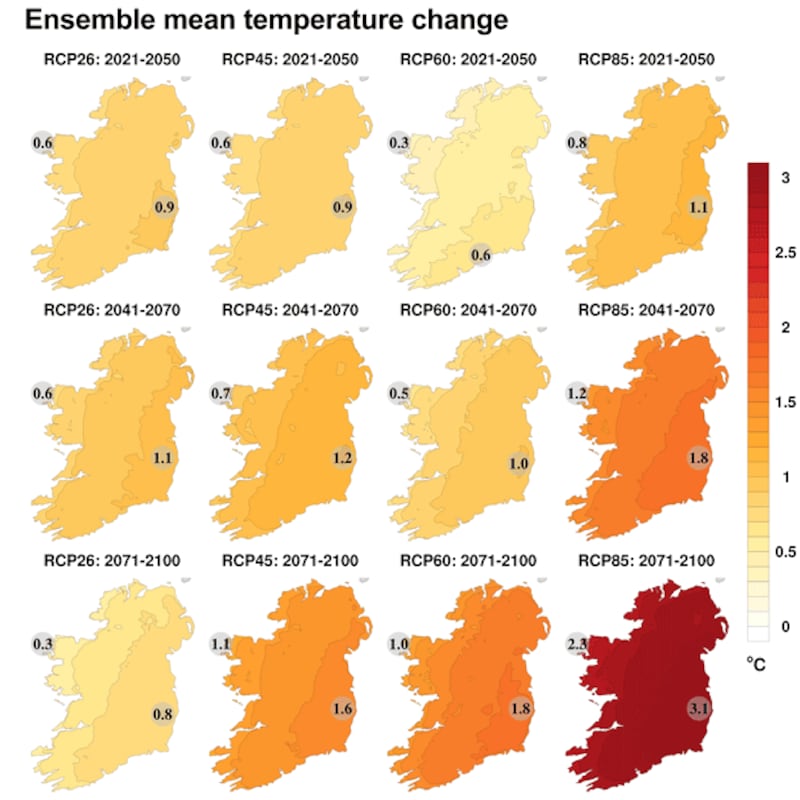The likely consequences of climate disruption on Ireland have been evident for many years – with some studies suggesting that apart from increased extreme weather events and some elevation in temperature, the country might escape the colossal impacts set for other parts of the world.
The Irish Centre for High-End Computing (ICHEC) has, however, used a supercomputer to analyse vast amount of climate data, and its findings undermine that comfortable perspective.
Not only is temperature rise by mid-century – less than 30 years away – predicted to be significant with far reaching consequences across all sectors of the economy and how we live, it is likely to come with significant regional variations.
The analysis used the national supercomputer based in Waterford Institute of Technology known as "Kay".
It indicates that by mid-century (2041-2060):
– Temperatures are projected to increase by 1 to 1.6 degrees compared with a baseline period of 1981-2000, with the largest increases in the east;
– Warming will be enhanced “at the extremes” (ie on hot days and cold nights) with summer daytime and winter night-time temperatures projected to increase by up to 2.4 degrees;
– “The precipitation climate” will become more variable, with substantial projected increases in occurrence of both dry periods and heavy rain events;
– The length of the growing season is projected to increase by between 12 per cent and 16 per cent.
ICHEC climate scientist and project lead Dr Paul Nolan ran a range of models in the form of "an ensemble of regional climate models" on Kay to generate "high-resolution climate projection data" which allowed for a more detailed assessment of potential regional and local effects of climate change – global trends were also factored in and a range of carbon emissions scenarios.

The exercise divided the country into blocks of 4km by 4km, and enabled a “high resolution” evaluation to be generated of what is likely to happen in each area; “the first systematic study of this kind at this scale”. Up to now broad comparisons were in most instances only possible with any reasonable degree of accuracy.
ICHEC environmental programme manager Alastair McKinstry said the climate projections can assist in planning for, and adapting to, the adverse effects of climate change at regional level like planning for flooding or drought.
The projections also indicate likely heating/cooling demand in buildings and what solar energy resources may be realised by mid-century.
The remarkable detail is revealed by Kay’s wind projections. Wind occurring at 120 metres – the height of a standard wind turbine – will decrease, notably in summer, it finds. Whereas increased wind at 10 metres – closer to the surface – is likely to exacerbate sea level rise and storm surge in coastal locations.
The temperature effects will have significant impact on biodiversity including insect life. With less frost, for instance, “more insects will survive the winter, which is of concern”, Mr McKinstry explained. That is likely to translate into bigger populations of mosquitos and disease-carrying ticks.While 45 extra growing days a year are predicted, farmers will have to also contend with wetter winters.
ICHEC director Jean-Christophe Desplat said the research commissioned by the Environmental Protection Agency and carried out with Met Éireann and the Marine Institute would inform national climate policy.
ICHEC was put in place to analyse large volumes of complex data and provide intelligent solutions that deliver effective policy change. Kay was built in 2018.








